Seeing these italicised letters at the start of a review is never a good sign, but like past games that have received this dubious honour Galactic Inheritors is no exception. During our First Impression a few comments were made, voicing the potential concerns of this title. Since it just entered Early Access any stern judgement was held back. However, it seems the game is practically the same as it was during the First Impression. Only a few mechanics were touched on with the rest of the changes being minor cosmetic alterations. A 6-month road-map seemed to be too short a time, so a final release after 4 months raised some concerns, which sadly proved to be true.
Galactic Inheritors was released on June 9, 2015 by Crispon Games and Argonauts Interactive. It’s a turn-based space 4X game with a narrower focus. It tries to bring a few new approaches towards your relations with other races and your military production. The game has no tactical battle (or mock simulation), no ground warfare (even as an abstracted system), or even diplomacy which is replaced with the media system.
Smaller, lighter weight titles can be fun, as I can name a few; sadly Galactic Inheritors is not one of them. A more economical title shouldn’t be an excuse for a poor strategy game and at the end Galactic Inheritors doesn’t really offer anything new or interesting. The game becomes rather dull quickly as all your decisions become way too predictable. There isn’t enough to keep the player engaged, and what is there is not substantive enough to make the game interesting to play.
Presentation and Set-Up
The game does look dated with a very simple UI. It should be noted that even games with weaker graphics can have a distinct visual style, though some of the splash art and background images are decent, the game’s GUI and graphical visuals are not very appealing or interesting. The music is okay, but it can get very repetitive as there doesn’t seem to be many tracks.
There aren’t many options either; you can pick between three map sizes, normal or a donut-shaped galaxy, three difficulty settings, and choose one of the five races available. The game will always feature all five races as the number of opponents is fixed. There’s a tutorial that is broken into sub-sections that can be played individually. They are short and quickly explain how to play the game.
Each race has a different bonus and penalty, and though this has an impact on which field you grow faster in, it was obvious after several playthroughs that these bonuses act as mere tie-breakers. Once any race gets their ball rolling, the momentum of an expanding power subsumes these bonuses. Also, since there seems to be only two paths to victory, and they both share the same core strategy, it is hard to see how these bonuses can lead to different playstyles.
The Exploration of a Linear Galaxy
The game uses Star-Lanes as the only means of movement, creating a map of linked nodes and chokepoints. Travel is limited along these lines and systems are colonised as a single entity. Exploration events will usually give a brief description of the star system and the theoretical planet you will be colonising. Except for this minor fluff, the system will just be a set of generic stats which act as a bonus to the max potential of your star system. The game tries to give each system extra special resources that can be exploited to give full bonuses to the system (increasing science, commerce, or industry). A few very rare system resources will have a global effect.
Exploitation is done by consuming a scout, giving the ship a role past the exploration phase. The effort is appreciated, but it doesn’t really add much to the game as these scouts can be produced very quickly even in the early game. It only seems to serve to slow down exploration as a system needs to be explored twice: once to be colonisable, a second time to reveal the resources, and then using up a number of scouts once colonised to tap into the full potential.
Another issue is that ship travel ranges are fixed, and no tech seems to change this. You can only colonise the next planet in the web, and travel a few systems from your colony with other ships. So the player needs to grab systems (every system) to expand his range. This becomes an issue in wars as well as you can only strike two systems deeper into enemy territory, needing you to colonise the worlds on the front in the middle of the war. The AI seems quite adept at re-colonising planets it just lost, sometimes turning the front in a game of whack-a-mole.
This also turns the early game into a chokepoint rush, as it’s easier to defend if the enemy goes through a given system and then you can cut off a bunch of stars from them so that you can colonise them at your own leisure. Though this may be intended, it does limit strategic choices as the only viable strategy is to expand as fast as possible, claim as many worlds, and grab these chokepoints. It doesn’t take long before the map is filled as every system is viable and even desired.
Another issue that seemed to have cropped up is a sadistic RNG during map creation and player placement. All too often the player, or one of the AI, will be blessed and be able to seal off about a third of the map for themselves, or end up being boxed in with less than 5 systems (once I got boxed in to 2). This can get especially lopsided when the race that gets a third of the map is next to the one that gets less than 5 systems. Who achieves what seems to be more about random luck than skill.
It should be noted I do not have an intrinsic dislike of Space-Lanes; the problem here is with the implementation and other mechanics surrounding it that causes the issue. The extreme limited range, closed border nature of the system, with a brutal RNG results in this being badly implemented. Now if someone doesn’t like Space-Lanes to begin with, this is just adding rocket fuel to a fire.
Building-Up the Empire for War
As mentioned earlier the game treats each system as a single entity. The player can build infrastructure that increases the planet’s potential in the three fields (commerce, production, and science). The planet’s actual output is the system’s developmental level (an abstraction for population growth), and it caps when there is not potential left to fill. It should be noted the rating in each three sectors is shared as the player doesn’t need to worry about specialisation.
Despite the unique way of going at it, most games tend to always have output be a relationship between population and structure. So a star system that has not grown will not have a high output even if the infrastructure is built. As mentioned, this is not new. In addition, since the development level will boost all three sectors this will mean all worlds will be fully developed given time. Since military production is handled via the Military-Industrial Complex and the Boost Commerce option doesn’t seem to do any difference (and you won’t need to build scouts or colony ships in the late game except during a war… oddly enough), you will always have an improvement queued up.
This is where the game’s glaring flaw manifests itself first. You will just build everything and anything on all your worlds. Though you will choose to build one thing over another first, the scaling cost of improvements and the time it takes for development to catch-up will usually push for earlier tiers of all three sectors before the next tier is built. This cuts down on micromanagement of systems, but it leaves very little developmental depth to the gameplay.
It doesn’t help that the production sink Boost Commerce (something you choose if nothing is available) doesn’t work. Even the Wonders that you can unlock with Tech seem to do nothing, making them useless to build. The Tech Victory Wonder does do its thing, but by the time you need to build those, you probably have a few fully developed systems that are eager to have a time-sink project to be queued.
The end goal will always be to have your system generate as much science (to tech-up faster) and commerce (to be able to build and field a space navy as fast as possible). Production is needed to be able to build these two faster. Though any strategy game can be seen in such a reductionist view, in the case of this title, this impression is naturally forming and doesn’t require any ‘Theory-Crafting’ to be achieved.
The game doesn’t seem to have any treasury either. A positive income translates into gaining points to an empire wide bonus. While a negative commerce will actually deduct points from this build-up (but not remove already unlocked perks), and act as a penalty to your science. The perk tally can go into the negatives, but negative science will just be the same as zero.
This causes a major balance issue since these perks are not that great except for a few and one can easily choose to ignore them at one point. So the player can either choose to have positive science, or just go overboard because if you are going to have 0 sciences, you might as well produce as much as you want. So the player can choose to produce a few cheaper ships, or build 9 of the biggest thing he wants if he is willing to stale his tech. This allows them to build up an armada very fast. This is an effective strategy when your fleet maintenance is the same as your commerce.
Military-Industrial Complex
The game tries to have an original approach to military production but it ends up being something that looks better on paper. The system is straight forward; you have 3 companies with 3 queues each. Each company gains XP separately and you can purchase upgrades that will be applied to future ships. At this level the system is interesting, but it has a few internal flaws and others that become apparent once we discuss the tech tree.
First, the XP growth is slow. One would need to build massive fleets to be able to even max one path. There are also three paths (three companies, three paths…) and though a player can spread their points or have more than one company use the same path first, it will take a while before the player gets even close to the top of a single path. In most of my games I was barely able to max out a path and that is with me not spreading my production out too much outside of a single company.
The system only seems to work if you are continuously building and replacing ships, then perhaps you might hit the end game with a single company with a maxed out path. Since this is the only element of customisation present in the game (techs only unlock ship classes), and it feels like these boosts serve more as a tie-breaker when combat does happen, the system ends up feeling irrelevant to the game.
Lastly, it ends up being a hindrance. The ships are always produced at your capital. This can be an issue as a fleet makes 1 jump per turn. It’s not uncommon to have the front at 20+ jumps away. Before this can be seen as an advantage to the defender, a collapsing empire will only be able to field a small number of ships before the maintenance alone cripples their science. It does help reinforce a war close to your core worlds, but other than that it just draws out wars as reinforcements take more time to get to the front than to actually build.
The Technology Tree
The tech tree follows the simplicity of the rest of the game. There are only two main branches, as one will need to research all prerequisites of a tech to move ahead. The first branch is the civic improvements and Wonder techs, including at the end of the branch the Tech Victory techs. The other branch is the ship class techs. Planetary defenses that slow down system sieges are spread between the two.
There are no weapon techs, no defensive ship techs, imperial improvement techs or techs that do cool things. It’s just about unlocking the system improvements and new ship classes. Improvements are just a boost to potential, each additional one giving a linear stacking bonus (and they will be built in order on your planets). The same is true for most planetary defenses, which only seem to slow down the damage of a siege. Since the Wonders have no effect but their techs still need to be researched they act like speed bumps.
Military techs, as mentioned, are just ship classes, and this too is also very straight-forward since it is really just a hull size and then two variants for that hull size (an offensive variant and a planet killing variant). Then the player gets the next hull size, and its two variants, ending with an upgrade to all the existing models. That’s it.
The Tech Victory is simply being able to research several special Wonder Techs and then building them which will take a long time for each. Once all the Wonders are completed the player activates the indestructible unstoppable ancient rail-guns that exist in every system to kill everyone and win. The only other way to end the game victorious is to wipe out the other races conventionally.
Media
Another new addition is the Media system, conceptually fine but the implementation could have been better. The system effectively replaces diplomacy as the game has no conventional diplomacy. The system is built around building up negative or positive media and then unlocking an effect that changes a race’s hate, fear, or greed towards you; or your race’s disposition towards them.
Positive Media is mutual and the other race needs to agree as both will gain the benefit for it which is a larger buffer before a war can be declared. Negative media is automatic and is to prepare your people to go to war by increasing greed, hate, or fear. The idea of influencing your people is interesting on paper but the system becomes a mere clock to when a war can be declared. So, positive media creates a buffer so it will take longer to get a war footing with a given race, which ensures it will take longer before they themselves can achieve a war with you… sort of.
This is said because I have seen wars declared on me when there was no way the other race had the negative relations to do so. It probably has to do with the fact you can only interact with a race if they share a border with you. More than once a newly contacted race automatically declared war on me. The Media screen showed we didn’t have the temperament for a war, thus circumventing the whole purpose of the system.
The other issue is the AI is random with this. One can do positive media on a race that is currently obliterating your worlds, have them agree to every single positive media choices, take them down to where they are below the point they can start a war, and the AI will refuse the peace treaty. I don’t object to the AI refusing the peace, but then why did it proceed to accept all the positive media relations? Why were they even possible during a war? What was the point?
The system’s redeeming quality is the flavour text for each option which does add a bit of immersion to the game, but since it’s the same six positive and six negative options for each race it doesn’t really change the mechanics involved. This shows the concept behind it might have been interesting but its gameplay application could have been handled better.
The system would have worked as a wonderful supplement to an existing (even if simple) diplomacy system instead of being a complete replacement for it. Even if the game’s focus is war, a simple diplomatic system with the Media system on top would have been interesting.
Warfare
Combat is handled automatically as the player builds pre-made ships, flings them against the enemy, chooses an attack stance of either attack or all-out attack (do more damage, receive more damage), and then glass the system before it is re-colonised by you (no conquest of existing colonies). Also, you will have to re-colonise while the front-line is still hot as it’s the only way to be able to strike deeper into enemy territory.
Also you will have to be fast because the defeated race might re-colonize it themselves and you will need to re-glass the world, or a third party might show up and take the world since everyone will have colony ships in standby ready to grab any recently glassed system from someone else’s war. This can cause you to be cut off from your enemy, ending the war prematurely as you gain a new unexpected neighbor.
Now if this description didn’t leave a sour taste in your mouth, perhaps this will. The auto-combat system is as basic as it can be. Although ships have different stats (I am sure they are used in the calculations), one doesn’t know how these figures interact. Games that tend to not have any tactical combat tend to have interesting simulation models that a theory-crafter can rake their brains on. Here, it seems the ultimate key to winning any battle is the force multiplier effect.
What I mean by this is take all the stats and throw them together, if you have the most Health and the highest attack values, you won. Though a cynic will point out this is true of all games, as mentioned earlier, this is on the forefront of your mind here. There is no illusion of anything. No nuance and no intricate systems to play with. It’s all too easy to figure out the mechanics and realise it ends up invalidating some elements of the other mechanics (like most of the perks in the Military-Industrial Complex mechanic).
This overly simple way of resolving wars also stresses another issue of the game, in a game where system management is simple, where there is no real diplomacy, where the tech tree is simple, where practically every element of the game is simple. One would expect there to be a focus somewhere, and since the game says it is about wiping out the other races and this approach is one of the two victory conditions, you’d think the game will have more emphasis on combat.
AI and Polish
The game’s AI does know how to the play the game, but the RNG for a good or bad start seems to have a larger impact if the game will be easy or hard. This doesn’t mean a harder setting doesn’t have a better chance to get the advantage over the player, just that the RNG can easily overcome that difference. Also, it seems the difficulties are merely a bonus, static, or penalty to the player’s tech rate. If the AI gets any bonuses at higher difficulties is hard to tell as they seem to behave the same way, except for being a little more aggressive against the player.
The game is stable; however, as mentioned a few times it seems there are missing features or features that don’t work. Boost Commerce seems to have no impact on commerce, and the time-consuming Wonders which also require time to research seem to have no effect what-so-ever. This gives the game an unfinished state, or that these elements were forgotten or cut but never removed from the game either. This makes the game’s stability seem, almost surprising.
Final Verdict
Sadly there isn’t much good to say about this game. It’s easy to learn, the mechanics are straight-forward, it is quick and easy to get into, and the game does attempt to add immersion by adding some nice flavour texts in the Media system, tech description, and system exploration. Many of these texts are rooted in some real science theory, and concepts of the media and how it affects people. However, it doesn’t change the nature of the game.
There are three critical flaws that really hold this game back. The first is to know your focus and do it. The game uses the Media system as a Casus Belli for war, as the player and AI (theoretically) can’t just start wars on the spur of the moment. It also plays on the concept that you can see these relations sour and see the war is coming. Also, having a unique way to produce ships and “level” them up. So then why doesn’t the game have a detailed combat system? Or on the flip side, if it has a simple straight-forward combat system why doesn’t it have a complex economic or diplomatic/media system?
You can’t have the entire game be straight-forward or simple. Overloading a game with features can cause the dreaded feature creep and can result in games that have no focus. The reverse is also true, a game with no focus or that doesn’t put enough meat on at least one of its bones will feel shallow and dull.
The second flaw is that the game seems to lack any meaningful opportunity cost to take a term from Economics. A good strategy game is one that gives the player a lot of tough choices in making strategic decisions. It feels like this game lacks this. I’m not saying that it doesn’t have any, but it is about as much of a trade-off as deciding if you tie your left shoe before your right shoe. There is an opportunity cost somewhere in there, but many won’t worry about it too much. All your star systems will be developed the same, and you will use the same strategy each time reacting to the map and the enemy who will always attack you eventually. Only in the tech tree will there be some (very few) tough choices, but even there, you don’t have that many and it’s more about the order you will research things.
The third major flaw is a good strategy game has the player making their tough choices based on several variables: some are known immediately, others must be fished out of the system by using some sort of game mechanic, and others the player will have to guesstimate. The game reveals a lot to you and the ones you have to guess are not that relevant or hard to guess. The overall situation is not that engaging or complex. This is because every mechanic in the game is too straight-forward and simple to give the player a good brain-teaser, or the actions that can be taken will be a very short list.
Now add in that the game has features that are not implemented but their framework is still there (like the Exploration Wonders in the Tech Tree), and you can understand why this has been my single most critical review at SpaceSector. I did not aim to be harsh, but I have trouble finding many redeemable qualities in this game. It had an interesting premise, it tried to do certain things differently, but it is far from being an engaging game.
The end result is I can’t find myself recommending this game to anyone, even someone who is new to the genre or someone who wants a lighter quick to play title. In both those cases we have plenty of games that fit those two criteria better. Even newer players tend to be interested in games that give them a fuller experience and one they can still play as they lose their training wheels. Galactic Inheritors is a game that is best avoided at the moment.
|
Space Sector score:
3.0/10
bad
|
|---|
| The Good: – Tries to introduce new concepts like Media & Military-Industry Complex – Attempts to increase immersion with exploration descriptions – Very quick to learn and has a decent tutorial |
| The Bad: – Media is a poor substitute for diplomacy – Military-Industry Complex is a poor substitute for tech-based improvements – Overly simple colony management, tech tree, combat, and conquest – Strategic depth is very shallow and predictable – Visuals comparable to budget games of the previous century |

23 Comments
Related Articles:
- Galactic Inheritors – Early Access First Impressions
- Stellar Indie Venture: Galactic Inheritors
- StarDrive Alpha Preview
- Legends of Pegasus: 4x Sci-fi Strategy Game Announced
- TLF: The Lost Technologies Expansion – Impressions

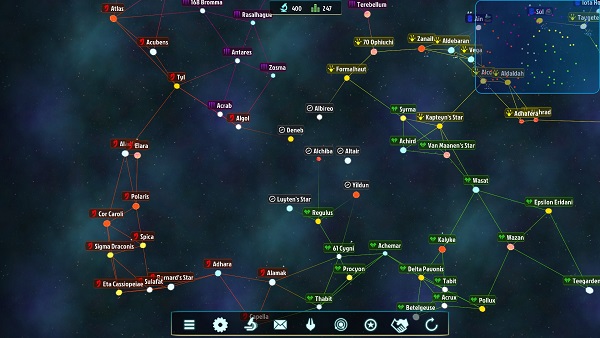
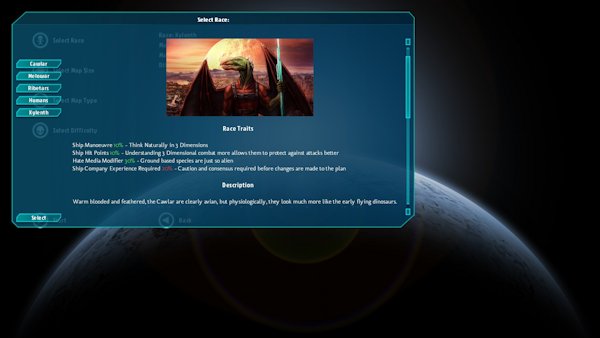
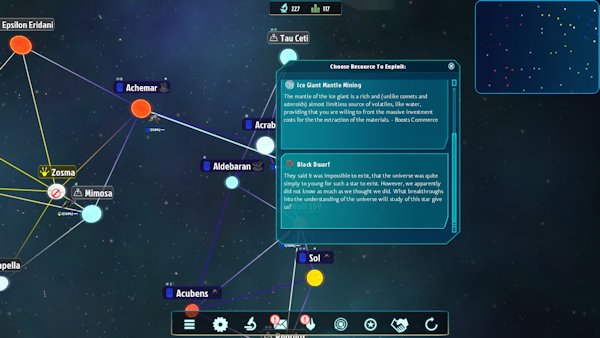
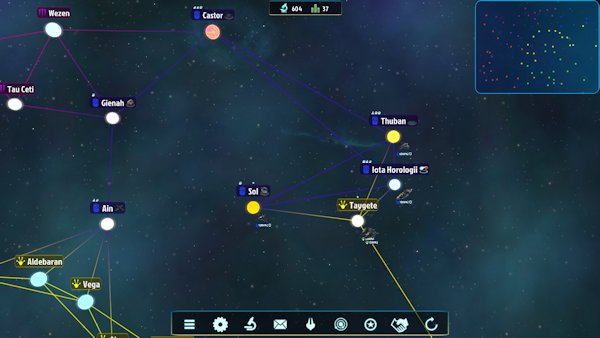
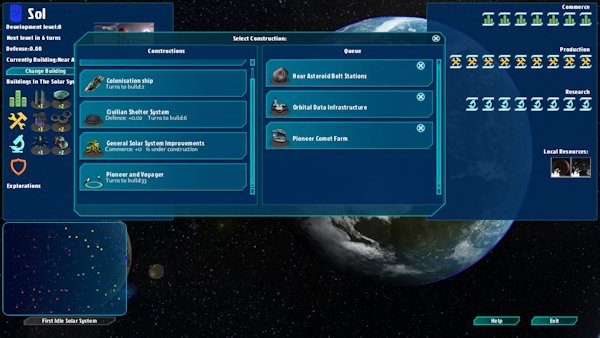
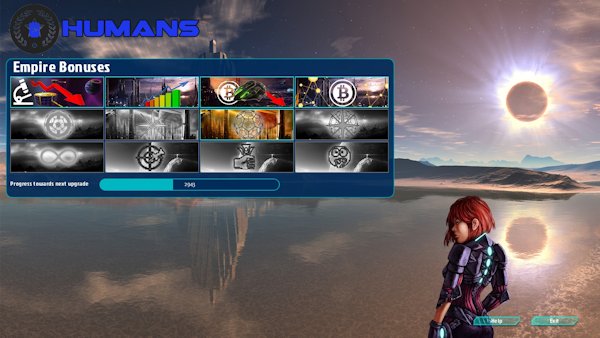
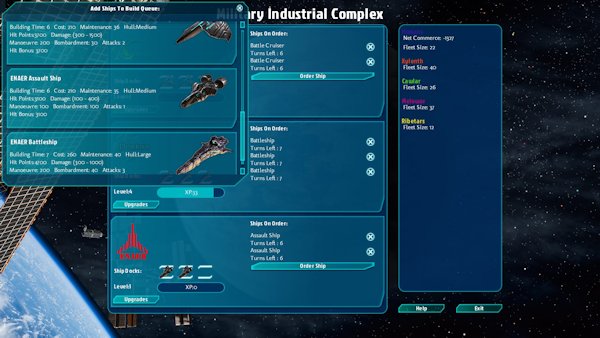
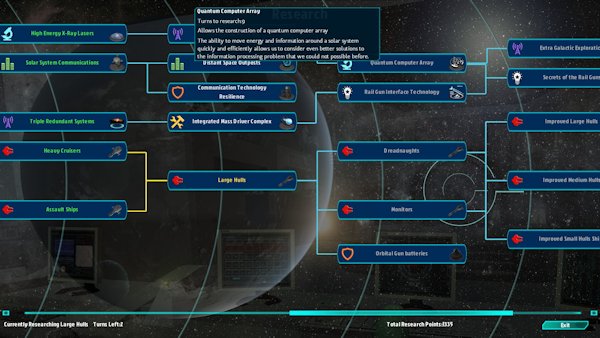
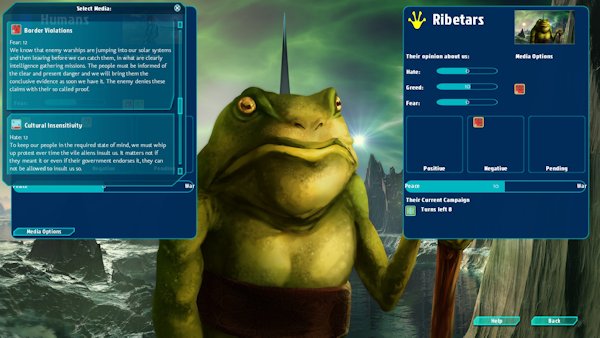
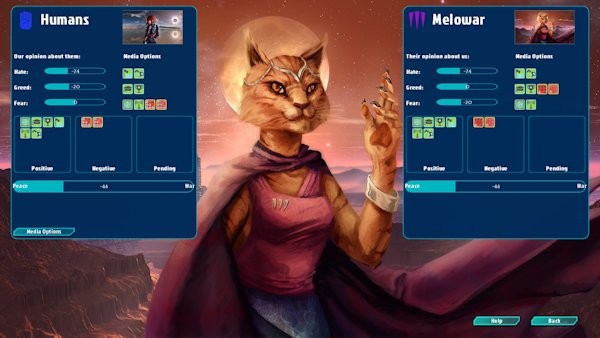
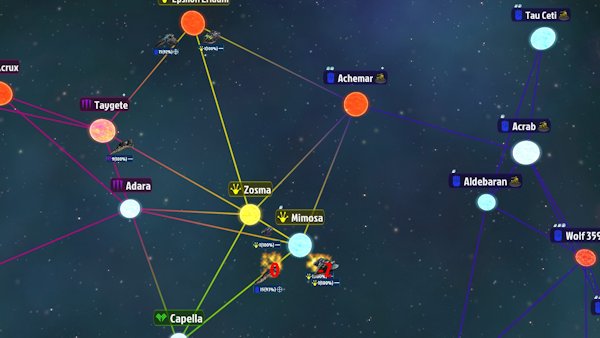
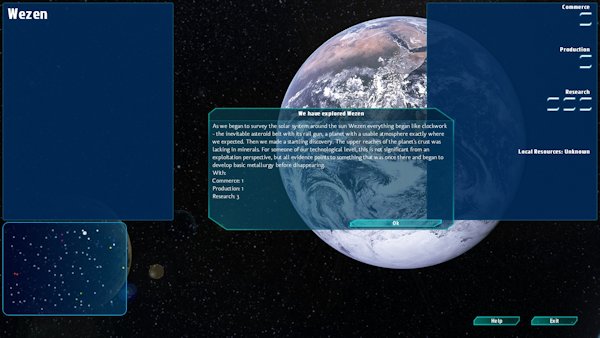
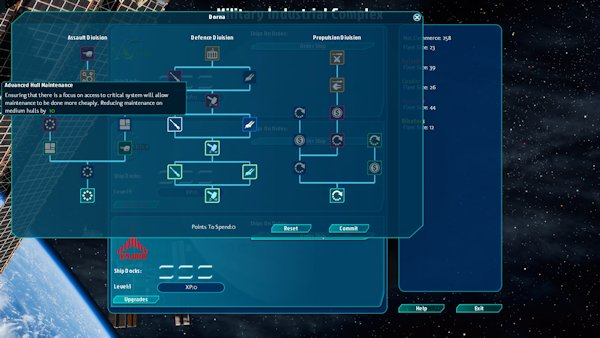

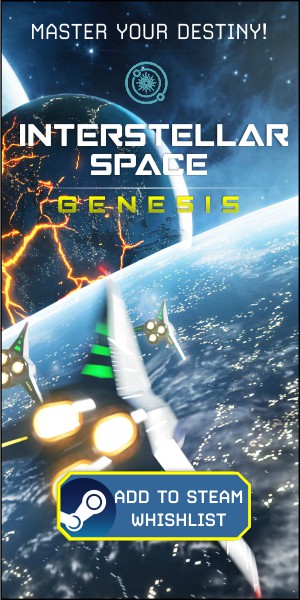





I don’t think Galactic Inheritors is actually a game. Its an interactive textbook for 4x devs which explains in detail how NOT to make a 4x space strategy game. And it does an excellent job, just design everything the exact opposite and you cant go far wrong.
Good review Edward, your suffering is appreciated.
Every time I encounter a game like Galactic Inheritors, I wonder “what were the developers thinking?” From the review, it doesn’t appear Crispon Games ran out of money and couldn’t complete the project, or that the design was so ambitious it was beyond the talents of the developers, nor is Galactic Inheritors an homage to an earlier classic. They simply designed, produced, and marketed an inferior product.
Why would you do such a thing?
The term “cheap cash grab” comes to mind. Check out how many positive reviews there are on the game’s Steam page. How they got there I have absolutely no idea, but many people will see all those thumbs up and just buy with no further research.
In a few months everyone will have forgotten that Galactic Inheritors ever existed but the devs will still have the money, made with practically no effort.
My first thought was 3.0/10 and 75% positive Reviews on Steam? One side must be wrong. But Edward named many of the weaknesses.
Creative people try new things that don’t work all of the time. There’s a huge difference between someone who tried and failed and someone who never cared in the first place.
Lol, Edward didn’t want anyone to read the whole review with this:
“The game has no tactical battle (or mock simulation), no ground warfare (even as an abstracted system), or even diplomacy which is replaced with the media system”.
Seriously though, I did finish the review but just for the fun in how bad a 4x game can be these days =D.
Thanks for the review. Guess I’m still waiting for a good new 4x TBS space game.
pfft, like this result was ever in doubt.
Now, would the M.O.R.E. supporters please chime in on why their game will be different.
Well, if you would actually look at the videos put out by IdeaLcenter for M.O.R.E., you’d see how it’s different. They’ve got all eight videos listed here: https://www.kickstarter.com/projects/1447560584/more-of-more/description . It’s obvious the gameplay is very different.
If you’re asking why I think M.O.R.E. will be getting better than a 3/10 review score, then it’s because I have hope :)
If M.O.R.E. (or Predestination, for that matter) gets a 4/10 (or worse) review score here on Space Sector, feel free to tell me “I told you so” and if it’s 6/10 (or better), I’ll do the same to you. If it’s a 5/10, we’ll call it even :)
If you don’t want to watch the videos, read the front page: http://www.morethegame.com/
The biggest surprise for MORE will be if it ever actually gets released.
My odds are on HL3.
And if you read their forum, you can see just how little progress there has been. The stuff they say they are ‘polishing’ or debugging right NOW should’ve been done in some pre-alpha dev build a year before their 2nd Kickstarter. Seriously, go read it. http://morethegame.com/forum/viewtopic.php?f=6&t=334&start=380
Those 8 videos were pretty much just some tech demo that one guy can whip up in a week – especially given we’ve seen what a one-man dev can actually do (Starsector, Stardriver, Limited Theory etc).
That game is like a PC game version of an online catfishing scam.
At least Predestination has released an alpha, although most of the graphics are placeholder and I have serious reservations about tedious micromanagement after only a few colonies. MORE, on the other hand, is vaporware. Kiss that $25 Kickstarter donation good bye.
Isn’t Predestination the one that’s supposed to have those revolutionary “colony templates” designed to minimize micromanagement? Sounds good in theory.
Good theory, still waiting.
Yeah but succeed or fail, at least they’ve recognized and attempted to address the issue of micromanagement overload. Which is more than you can say for 99.9% of 4x game devs who appear to be completely clueless, both about that and basic game design.
Admittedly it would be better if they succeeded rather than failed. Potential without successful implementation is cold comfort, as SOTS II proved so well.
Its a real pity when another unplayable Space 4X game graces our already overflowing pile of crap that we have to sift through. Space 4X games are so few and far between that even the semi good ones are praised as being great, insert Endless Space and GalCiv3. I hope we get to see some playable games of noteworthy mention in the next 12-18 months. If Stellaris and the new Orion disappoint in 2016, I will sell my PC and join a monastery for 10 years. Because in my humble opinion, these games represent the industries last best hope for the next decade. If they fail I do not hold much hope for any future efforts.
“If Stellaris and the new Orion disappoint in 2016, I will sell my PC and join a monastery for 10 years.”
Hah! I bet you won’t! :)
I don’t hold out much hope for the MOO reboot. They’ve already admitted that it has forced starlanes and “streamlined” tactical combat. Not very encouraging.
Stellaris? Maybe. Fingers crossed.
I also have high hopes for Predestination. Which are probably misplaced :(
So many space 4X games are in the works.
Those from bigger/established devs:
– Master of Orion Reboot
– Endless Space 2
– Stellaris
Those from smaller/indie devs:
– MORE
– Predestination
– Stars Beyond Reach
– Dominus Galaxia
– Galaxia: Remember Tomorrow (look this one up)
– Heirs of Orion
– Imperia 5X
– Java MoO (MoO 1 clone)
– Lord of Rigel (also looks cool)
– Pocket Space Empires
– Remnant
– Descendants: Voidborne
– Xenia’s Ark
Who knows – these could all flop, but at least one of them is bound to hold some promise.
Check out the full list with links here:
https://docs.google.com/spreadsheets/d/1jQ37Ghm818Xl_XBLEKUB52g5G6fPiIzpxyCeMA0NQzI/edit?usp=sharing
Don’t forget my project ;) thought maybe not official enough yet and progress has been slow lately, hard to find time outside of work atm.
Everytime a new indie game comes out I really am hoping for something new and exciting but then see something like this review and feel a little bad for the devs IF they really tried to make something interesting (perhaps not in this example?). Then I get quite motivated to spend more time on my game thinking surely and can complete something more interesting then this at least… just need to find time.
http://indiedb.com/games/worlds-collide
I’m really hopeful for Stellaris and ES2 (if they can add what they learnt from EL to it). Got predestination and MORE just waiting to see how they turn out…
Galactic Inheritors has set a new low watermark in the space 4x genre. Game devs across the planet can rejoice in the knowledge that nothing they do can ever be quite as bad. That’s somehow comforting…….